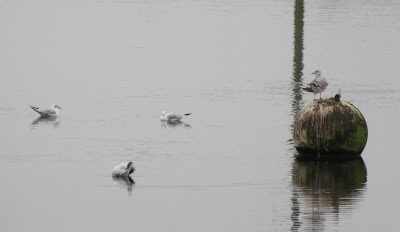BBOWT raised the money to buy the site last year and are currently running an appeal to raise additional funds to extend the site. You can read more about the appeal here.
You can read my guest post on the BBOWT blog here, or a copy of it is below.
My Secret Garden
“And the secret
garden bloomed and bloomed and every morning revealed new miracles.”
- Francis Hodgson
Burnett
There’s a magical place that has felt like my secret garden
since the first time I set foot in it. Beautiful, secluded and surrounded by
stunning scenery, Yoesden is an absolute treasure. Loved by both myself and my
daughter, it is home to the most amazing wildlife which we delight in
discovering with every visit.
Part of its charm is that Yoesden is hidden away. There’s no
shiny visitor’s centre or signs on the road. In fact, unless you knew where to
look, you’d never know it was there. We always reach it by walking through a
flower filled meadow, past a cowshed housing several swallows nests each
summer. The path continues through the trees until the chalk grassland bank is
revealed. It doesn’t matter how many times you visit, that first glimpse of the
bank and the sweeping Chiltern hills is guaranteed to take your breath away.
You’re suddenly miles from anywhere, shut off from the outside world, in the
very best natural playground.What strikes you first is the peace and tranquility, yet stay a while and you soon realise how noisy and busy it is. Wild flowers smother the bank all summer and on a sunny day they’re literally buzzing with a vast array of butterflies, moths, bees, beetles and flies. Green hairstreaks, small blues, chalkhill blues and dazzling adonis blues are just a few of the fabulous butterflies that make Yoesden their home.
Crickets and grasshoppers
chirp and whirr all around and if your luck is in you might see an enormous
great green bush-cricket (my daughter’s favourite because they’re “awesome”).
Excited families of long-tailed tits flit through the bushes welcoming
visitors, while a robin takes up a vantage point and serenades the spectacle.
Green woodpeckers yaffle from the woods behind, red kites soar overhead and
buzzards swoop along the length of the bank.
No secret garden would be complete without a floral display
and Yoesden never disappoints. The delicate primroses and violets in spring are
replaced by the elegant and showy orchids that carpet the bank in June. By late
summer the Chiltern Gentian is the star of the show, followed by the purple
haze of devil’s-bit scabious.
It may be our secret garden, but this is one secret we don’t mind sharing. Everyone should visit this enchanting nature reserve and fall under its delightful spell.
It may be our secret garden, but this is one secret we don’t mind sharing. Everyone should visit this enchanting nature reserve and fall under its delightful spell.




























































